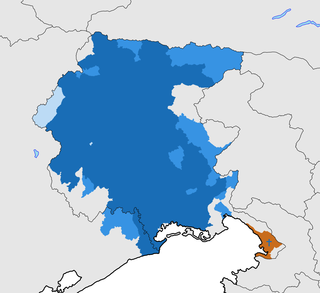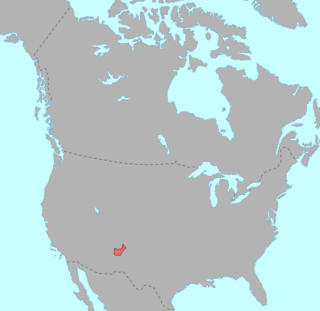In grammar, an article is any member of a class of dedicated words that are used with noun phrases to mark the identifiability of the referents of the noun phrases. The category of articles constitutes a part of speech.
The apostrophe is a punctuation mark, and sometimes a diacritical mark, in languages that use the Latin alphabet and some other alphabets. In English, the apostrophe is used for two basic purposes:

Tuvaluan, often called Tuvalu, is a Polynesian language closely related to the Ellicean group spoken in Tuvalu. It is more or less distantly related to all other Polynesian languages, such as Hawaiian, Māori, Tahitian, Samoan, Tokelauan and Tongan, and most closely related to the languages spoken on the Polynesian Outliers in Micronesia and Northern and Central Melanesia. Tuvaluan has borrowed considerably from Samoan, the language of Christian missionaries in the late 19th and early 20th centuries.
The plural, in many languages, is one of the values of the grammatical category of number. The plural of a noun typically denotes a quantity greater than the default quantity represented by that noun. This default quantity is most commonly one. Therefore, plurals most typically denote two or more of something, although they may also denote fractional, zero or negative amounts. An example of a plural is the English word cats, which corresponds to the singular cat.
In linguistics, reduplication is a morphological process in which the root or stem of a word or even the whole word is repeated exactly or with a slight change.

Friulian or Friulan is a Romance language belonging to the Rhaeto-Romance family, spoken in the Friuli region of northeastern Italy. Friulian has around 600,000 speakers, the vast majority of whom also speak Italian. It is sometimes called Eastern Ladin since it shares the same roots as Ladin, but over the centuries, it has diverged under the influence of surrounding languages, including German, Italian, Venetian, and Slovene. Documents in Friulian are attested from the 11th century and poetry and literature date as far back as 1300. By the 20th century, there was a revival of interest in the language.
Niuean is a Polynesian language, belonging to the Malayo-Polynesian subgroup of the Austronesian languages. It is most closely related to Tongan and slightly more distantly to other Polynesian languages such as Māori, Samoan, and Hawaiian. Together, Tongan and Niuean form the Tongic subgroup of the Polynesian languages. Niuean also has a number of influences from Samoan and Eastern Polynesian languages.
Yaqui, locally known as Yoeme or Yoem Noki, is a Native American language of the Uto-Aztecan family. It is spoken by about 20,000 Yaqui people, in the Mexican state of Sonora and across the border in Arizona in the United States. It is partially intelligible with the Mayo language, also spoken in Sonora, and together they are called Cahitan languages.

Keres, also Keresan, is a Native American language, spoken by the Keres Pueblo people in New Mexico. Depending on the analysis, Keres is considered a small language family or a language isolate with several dialects. The varieties of each of the seven Keres pueblos are mutually intelligible with its closest neighbors. There are significant differences between the Western and Eastern groups, which are sometimes counted as separate languages.
Swedish is descended from Old Norse. Compared to its progenitor, Swedish grammar is much less characterized by inflection. Modern Swedish has two genders and no longer conjugates verbs based on person or number. Its nouns have lost the morphological distinction between nominative and accusative cases that denoted grammatical subject and object in Old Norse in favor of marking by word order. Swedish uses some inflection with nouns, adjectives, and verbs. It is generally a subject–verb–object (SVO) language with V2 word order.

English in Southern England is the collective set of different dialects and accents of Modern English spoken in Southern England.
The morphology of the Welsh language has many characteristics likely to be unfamiliar to speakers of English or continental European languages like French or German, but has much in common with the other modern Insular Celtic languages: Irish, Scottish Gaelic, Manx, Cornish, and Breton. Welsh is a moderately inflected language. Verbs inflect for person, number, tense, and mood, with affirmative, interrogative, and negative conjugations of some verbs. There is no case inflection in Modern Welsh.
The Ojibwe language is an Algonquian American Indian language spoken throughout the Great Lakes region and westward onto the northern plains. It is one of the largest American Indian languages north of Mexico in terms of number of speakers, and exhibits a large number of divergent dialects. For the most part, this article describes the Minnesota variety of the Southwestern dialect. The orthography used is the Fiero Double-Vowel System.
Tsez, also known as Dido, is a Northeast Caucasian language with about 15,000 speakers spoken by the Tsez, a Muslim people in the mountainous Tsunta District of southwestern Dagestan in Russia. The name is said to derive from the Tsez word for "eagle", but this is most likely a folk etymology. The name Dido is derived from the Georgian word დიდი, meaning "big".
This article provides a grammar sketch of the Nawat or Pipil language, an endangered language spoken by the Pipils of western El Salvador and Nicarao people of Nicaragua. It belongs to the Nahua group within the Uto-Aztecan language family. There also exists a brief typological overview of the language that summarizes the language's most salient features of general typological interest in more technical terms.
The grammar of American Sign Language (ASL) has rules just like any other sign language or spoken language. ASL grammar studies date back to William Stokoe in the 1960s. This sign language consists of parameters that determine many other grammar rules. Typical word structure in ASL conforms to the SVO/OSV and topic-comment form, supplemented by a noun-adjective order and time-sequenced ordering of clauses. ASL has large CP and DP syntax systems, and also doesn't contain many conjunctions like some other languages do.

In linguistic morphology, inflection is a process of word formation in which a word is modified to express different grammatical categories such as tense, case, voice, aspect, person, number, gender, mood, animacy, and definiteness. The inflection of verbs is called conjugation, and one can refer to the inflection of nouns, adjectives, adverbs, pronouns, determiners, participles, prepositions and postpositions, numerals, articles, etc, as declension.
Zero-marking in English is the indication of a particular grammatical function by the absence of any morpheme. The most common types of zero-marking in English involve zero articles, zero relative pronouns, and zero subordinating conjunctions. Examples are I like cats in which the absence of the definite article, the, signals cats to be an indefinite reference, whose specific identity is not known to the listener; that's the cat I saw in which the relative clause (that) I saw omits the implied relative pronoun, that, which would otherwise be the object of the clause's verb; and I wish you were here. in which the dependent clause, (that) you were here, omits the subordinating conjunction, that.
The morphology of the Welsh language shows many characteristics perhaps unfamiliar to speakers of English or continental European languages like French or German, but has much in common with the other modern Insular Celtic languages: Irish, Scottish Gaelic, Manx, Cornish, and Breton. Welsh is a moderately inflected language. Verbs conjugate for person, tense and mood with affirmative, interrogative and negative conjugations of some verbs. A majority of prepositions inflect for person and number. There are few case inflections in Literary Welsh, being confined to certain pronouns.
Malay grammar is the body of rules that describe the structure of expressions in the Malay language and Indonesian. This includes the structure of words, phrases, clauses and sentences. In Malay and Indonesian, there are four basic parts of speech: nouns, verbs, adjectives, and grammatical function words (particles). Nouns and verbs may be basic roots, but frequently they are derived from other words by means of prefixes and suffixes.




